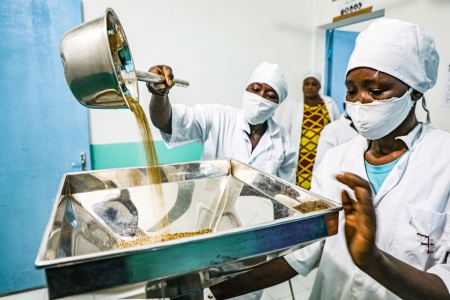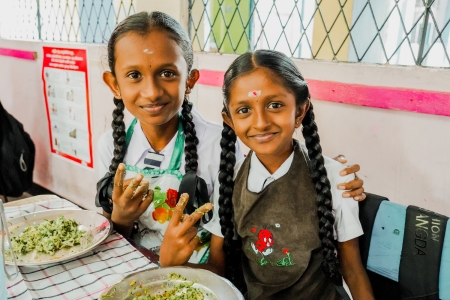Hidden Hunger Unveiled: Empowering Communities Through Food Fortification
Hunger comes in many forms — from lack of access to food to lack of adequate nutrition. Micronutrient malnutrition, also known as 'hidden hunger,' is a global challenge, affecting over 2 billion people worldwide. In many countries where the World Food Programme works, many people do not have access to a healthy, nutritious diet that provides all the vitamins and minerals necessary for a healthy life.
The consequences of this deficiency may not be immediately visible, but they can lead to severe health issues, especially for vulnerable groups such as children and women. But food fortification, an innovative solution which increases the micronutrient content of essential vitamins and minerals in common foods, can help. Foods like rice, maize and flour can easily been enriched to give a nutritional boost.
The Global Impact:
A staggering one-third of the world's population suffers from micronutrient deficiency, including 1 in 2 preschool-aged children and 2 in 3 women. These kinds of deficiencies often result in impaired immune function, limited cognitive and physical development, and in some cases, an increase in maternal and child mortality.
History of Fortification: A Journey Towards Better Nutrition
Food fortification has a fascinating history that dates back to the 1920s when European and North American countries took a significant step towards improving public health by adding micronutrients to staple foods like salt, milk, and margarine. This simple yet powerful change improved health conditions related to micronutrient malnutrition.
In the 1940s, North American countries continued the fortification trend by enriching maize and wheat flour with iron and vitamin B. Iron, a crucial mineral, plays a vital role in producing haemoglobin, which carries oxygen in our blood, preventing anemia and its debilitating effects. Vitamin B, an essential nutrient, supports various bodily functions, including energy metabolism, DNA synthesis, nerve function, and red blood cell production, further enhancing overall health.
The 1960s and 70s saw Latin American countries continuing this innovative trend by fortifying foods like cornmeal and sugar. By doing so, they effectively reduced levels of anemia and vitamin A deficiency.
Several years later, in the 1990s, salt iodization gained popularity worldwide, leading to a significant decrease in iodine deficiencies from 110 countries in 1993 to just 25 countries in 2015.
Did you know that in 1996 Oman emerged as a pioneer by fortifying wheat flour with folic acid? This resulted in a remarkable decrease in birth defects across the country.
Since 2001, Costa Rica has taken a proactive approach by fortifying all of its rice, adding just 1 cent to the price of a one-kilogram bag. Fortified rice is enriched with essential vitamins and minerals like iron, zinc, vitamin A, and B, effectively addressing nutrient deficiencies and promoting better nutrition and overall health.
The journey of fortification has showcased the power of simple interventions, transforming the lives of millions worldwide.


Pledges for a Brighter Future: WFP's Role
In 2021, the World Food Programme distributed a remarkable 1,478,081 metric tons of fortified foods. Thanks to the organization’s support, 60 countries have implemented national fortification projects, setting an example of the global commitment to address this persistent issue.
At the Nutrition for Growth Summit in Tokyo in 2021, WFP pledged to increase the production of fortified wheat flour, maize meals, and rice distributed from 60% in 2020 to an impressive 80% by 2025.
Empowering Innovation in Mali:
In Mali, WFP's Innovation Accelerator has been instrumental in promoting food fortification projects. One notable initiative involved the testing of imported fortified kernels mixed with local rice. The aim was to enhance cost-efficiency and reduce the country's dependence on external staple foods.
Working in partnership with Malô, a local company founded by young innovators and entrepreneurs, the project successfully produced over 500 metric tons of fortified rice. This nutritious rice was distributed to schools, benefiting children by boosting their essential vitamin intake, strengthening their immune systems, and supporting cognitive development.
Hidden hunger may be widespread, affecting billions of lives around the world, but we have the power to make a difference.
Food fortification, a simple and effective intervention, is empowering communities and transforming lives. With continued global efforts and innovative initiatives like those in Mali, we can envision a future where micronutrient deficits are eradicated, ensuring a healthier and brighter world for all.